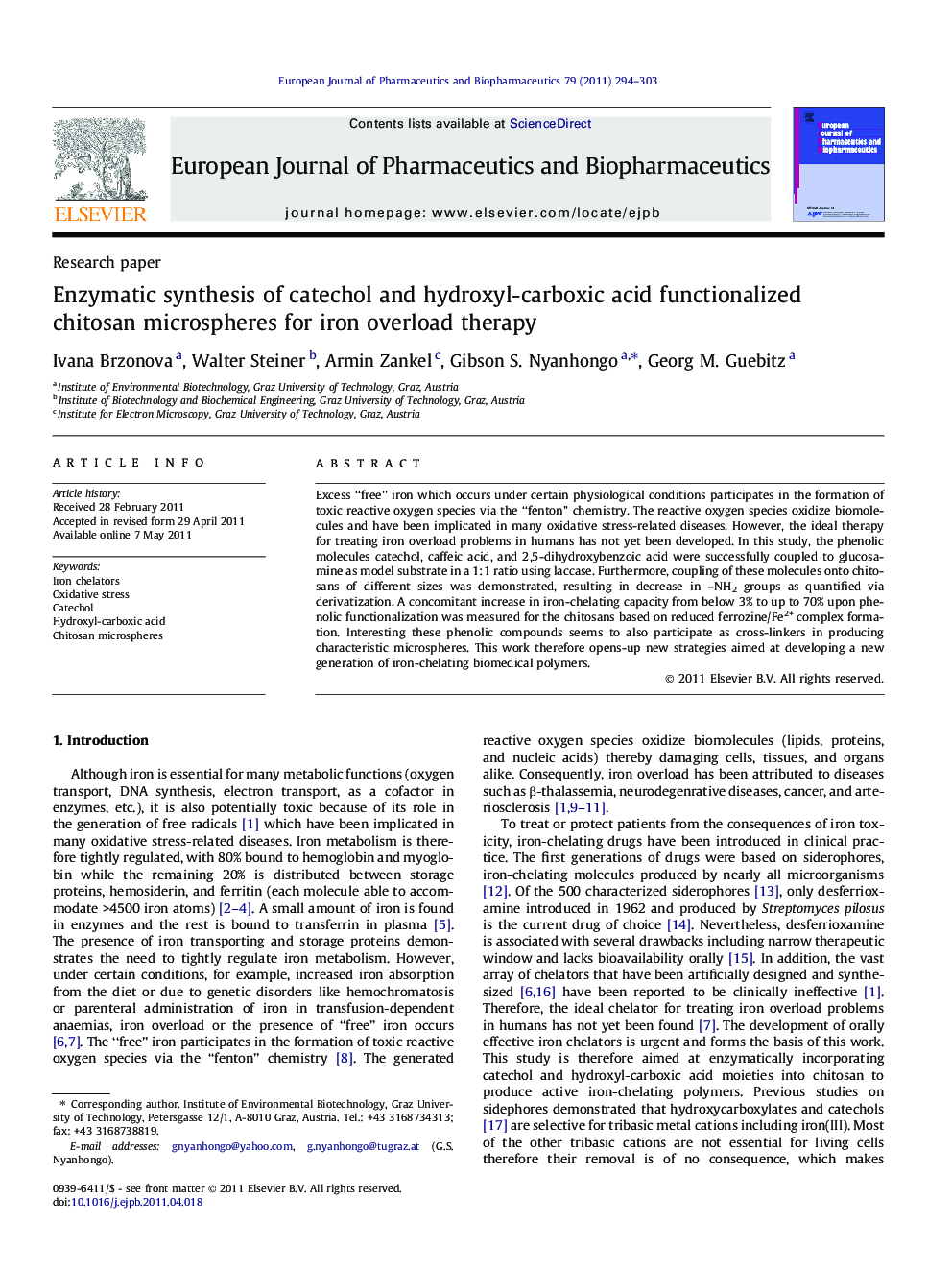| Article ID | Journal | Published Year | Pages | File Type |
|---|---|---|---|---|
| 2085401 | European Journal of Pharmaceutics and Biopharmaceutics | 2011 | 10 Pages |
Excess “free” iron which occurs under certain physiological conditions participates in the formation of toxic reactive oxygen species via the “fenton” chemistry. The reactive oxygen species oxidize biomolecules and have been implicated in many oxidative stress-related diseases. However, the ideal therapy for treating iron overload problems in humans has not yet been developed. In this study, the phenolic molecules catechol, caffeic acid, and 2,5-dihydroxybenzoic acid were successfully coupled to glucosamine as model substrate in a 1:1 ratio using laccase. Furthermore, coupling of these molecules onto chitosans of different sizes was demonstrated, resulting in decrease in –NH2 groups as quantified via derivatization. A concomitant increase in iron-chelating capacity from below 3% to up to 70% upon phenolic functionalization was measured for the chitosans based on reduced ferrozine/Fe2+ complex formation. Interesting these phenolic compounds seems to also participate as cross-linkers in producing characteristic microspheres. This work therefore opens-up new strategies aimed at developing a new generation of iron-chelating biomedical polymers.
Graphical abstractLaccase oxidizes catechol resulting in the formation of radical quinone which then reacts with the NH2 group of the chitosan. The catechol fnctionalized chitosan is further processed to produce microspheres.Figure optionsDownload full-size imageDownload as PowerPoint slide
